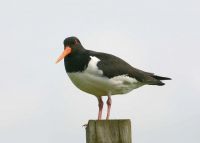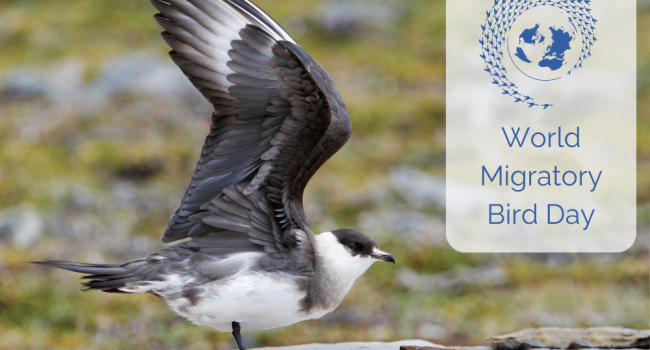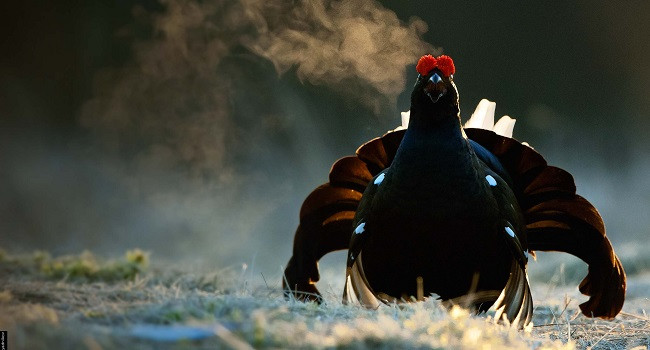Oystercatchers down at Scotland's important estuaries
01 Oct 2012 | No. 2012-33
The latest figures collected by Wetland Bird Survey (WeBS) volunteers illustrate the importance of Scotland’s diverse communities of wintering waterbirds. Internationally important numbers of wildfowl and waders use Scotland’s estuaries and other wetlands in winter, many of which come here from breeding areas as far away as Greenland and Siberia. However, one of our most familiar waders is in decline.
Oystercatchers in Scotland is unclear
During particularly harsh winters such as 2010/11, the coldest for 35 years, the UK’s wetlands can act as a refuge for waterbirds forced out of frozen continental Europe. Yet, the latest counts collected by Wetland Bird Survey (WeBS) volunteers reveal the continuation of a sharp drop in the number of Oystercatchers wintering in Scotland. Having steadily increased during the 1980s and 1990s, numbers of Oystercatchers wintering in Scotland have declined at an even more rapid rate in the last ten years.
The declines in Oystercatcher numbers include the most important sites in Scotland, such as the Solway Estuary, where the peak count of just over 21,000 birds in 2010/11 was the lowest for 25 years. Despite this drop, the Solway remains one of eight locations in the UK to host internationally important numbers of Oystercatcher. The Solway supports an incredible 100,000 geese, ducks and waders in winter, and is particularly important for eight species, including Oystercatcher and Ringed Plover, which is now at an all-time low across the UK as a whole having declined by 25% in the last 25 years.
The reason for the change in fortunes for Oystercatchers in Scotland is unclear. In 2010/11, it is possible that some birds may have moved to Morecambe Bay in north-west England, where a record number of over 80,000 Oystercatchers were counted, but this does not explain why numbers have also declined in earlier years. Understanding this may be crucial to ensure Oystercatchers remain a key feature of Scottish wetlands in the future.
Chas Holt, WeBS Organiser at the British Trust for Ornithology, said “We are indebted to over 600 WeBS volunteers who braved the freezing winter of 2010/11 to count Scotland’s internationally important populations of wildfowl and waders. This fantastic effort is fundamental in helping to illustrate the population trends of wintering waterbirds in Scotland and across the UK as a whole.”
Simon Wotton, Senior Conservation Scientist at RSPB said: “The results of the 2010/11 winter show how important protected areas are for the wintering waterbirds. The increased use of sites during this cold winter, including areas managed by conservation bodies such as RSPB, show how valuable well managed wetlands can be to birds who need a safe place to go when the continent freezes over. The latest figures highlight the importance of this long-running survey and the importance of volunteer surveyors.”
Andy Douse, Ornithological Policy & Advice Manager at Scottish Natural Heritage, said: "The latest WeBS report highlights the changes that we continue to see in the migratory populations of birds that winter in Scotland and the rest of the UK. While some of these can be explained as changes brought about by changes in weather, others are less easy to explain, but may be indicators of more long term change in our climate. This only enhances the value of the counting carried out by hundreds of volunteers, often under the challenging conditions we have seen in the last two winters."
Richard Hearn, Head of Monitoring at Wildfowl & Wetlands Trust, said: “This is just one example of many unexplained changes in waterbird numbers occurring in the UK. The number and scale of these changes continue to increase and so we urgently need research that provides us with an understanding of the causes. In order for this to be successful, the continuation of monitoring like WeBS is essential, and the volunteer birdwatchers who contribute to such schemes are therefore playing a vital role in waterbird conservation, for which they deserve great credit and thanks.”
Notes for Editors
- The BTO is the UK's leading bird research organisation. Over thirty thousand birdwatchers contribute to the BTO's surveys. They collect information that forms the basis of conservation action in the UK. The BTO maintains a staff of 100 at its offices in Norfolk, Stirling and Bangor, who analyse and publicise the results of project work. The BTO's investigations are funded by government, industry and conservation organisations.
- The Wetland Bird Survey (WeBS) is the monitoring scheme for non-breeding waterbirds in the UK, which aims to provide the principal data for the conservation of their populations and wetland habitats. WeBS is a partnership between the British Trust for Ornithology, the Royal Society for the Protection of Birds and the Joint Nature Conservation Committee (the latter on behalf of the Council for Nature Conservation and the Countryside, the Countryside Council for Wales, Natural England and Scottish Natural Heritage) in association with the Wildfowl and Wetlands Trust.
- To view the report please visit http://www.bto.org/volunteer-surveys/webs/publications/wituk-201011
Contact Details
Chas Holt
(BTO WeBS Organiser)
Office: 01842 750050
(9am to 5.30pm)
Email: webs [at] bto.org
Paul Stancliffe
(BTO Media Manager)
Office: 01842 750050
(9am to 5.30pm)
Mobile: 07585 440910 (anytime)
Email: press [at] bto.org
Images are available for use alongside this News Release
Please contact images [at] bto.org quoting reference 2012-33
The BTO has an ISDN line available for radio interviews
Please contact us to book an interview
Office: 01842 750050







Share this page